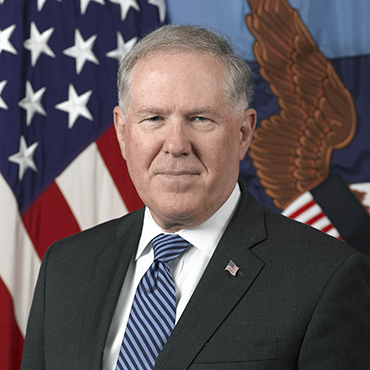DOD official takes aim at interference from Congress

Frank Kendall, the outgoing and possibly last undersecretary of defense for acquisition, technology and logistics, says congressional attempts to reform acquisition do more harm than good.

DOD's acquisition chief Frank Kendall said that Congress is a "blunt instrument" for reforming the Pentagon's buying practices.
In a sprawling talk summarizing his 228-page book on defense acquisition, the outgoing undersecretary of defense for acquisition, technology and logistics said that congressional efforts to reform acquisition are an ineffective "blunt instrument."
Speaking at the Center for Strategic and International Studies, Frank Kendall said that he is not a believer in "acquisition magic," and that improvements will be evolutionary and incremental.
"The Hill has a very imperfect tool to try to improve acquisition results," said Kendall. "It can do things like organizational structures, it can set very firm requirements in some cases for how we do business. It is not a good instrument to achieve the result that I think the Hill is after, but they keep trying."
Kendall said that more often than not, Congress creates more bureaucracy and regulation that requires the DOD to spend more time demonstrating compliance.
"Acquisition improvement is going to have to come from within," he said. "It's not going to be engineered by Hill staffers writing laws for us. It is going to be done by people in the trenches every day dealing with industry, trying to get the incentives right, trying to get the performance right."
Kendall said Congress puts a competitive straitjacket on the DOD. "The spectrum of things we have to do is too broad, too diverse, and we need the flexibility in the department to do the right thing for whatever program it is we're doing," he said.
In the 2017 National Defense Authorization Act, Congress ordered the break up of Kendall's position into two new undersecretary positions, one for acquisition and sustainment and the other for research and engineering. That structure is similar to the pre-Goldwater-Nichols DOD of the 1980s.
Kendall has been a firm critic of the decision to split up AT&L, saying that it's essential to have one person who is overseeing the entire life cycle of a product or program.
"I'm not sure how it's going to work out with what's in the law now, he said. "I can see it going in a good way or a bad way.
"One of the things I've worked on very hard in the last few years is to have my acquisition assistant secretary and my research and engineering assistant secretary work very closely together and to focus on the transition of technology in their products," he said, adding that he worries integration will be lost by the change.
"What scares me ... is we'll bring in outsiders who have no idea how the Pentagon works, they'll have no idea how the defense industry works, and I've seen that with the first few undersecretaries for acquisition," said Kendall. He said those initial outsiders with business experience generally lasted only a short time and failed to understand how DOD worked and how to move it forward.
Kendall argued that the DOD has made extensive progress in recent years and has improved metrics to measure performance. But he said DOD's role isn't to focus its energy on efficiency of spending, but to provide the warfighter with the products needed to maintain America's defensive edge.
"I don't regard it as a failure if a program has a 10 or 20 percent overrun in R&D if I get the product that I wanted at the end of that at a reasonable price," he said, adding that "the metric that matters at the end of the day is, are we going to win?"
The undersecretary argued that while there has been an emphasis on innovation in recent years, the problem hasn't been a lack of innovation. What is needed, he said, is more money to take innovative products from prototype to production and get them on the battlefield.
He said Congress could help the DOD by ending sequestration and by providing more flexibility for the department to recruit and better compensate the workforce it needs.
Kendall said that going forward, the DOD needs to continue the focus on the "Third Offset" and embrace new technologies such as autonomy, big data and artificial intelligence that America's peer competitors have been harnessing.
"We do not yet have the clear design concept, if you will, for a new suite of capabilities that will be dramatically better on the battlefield," he said.


